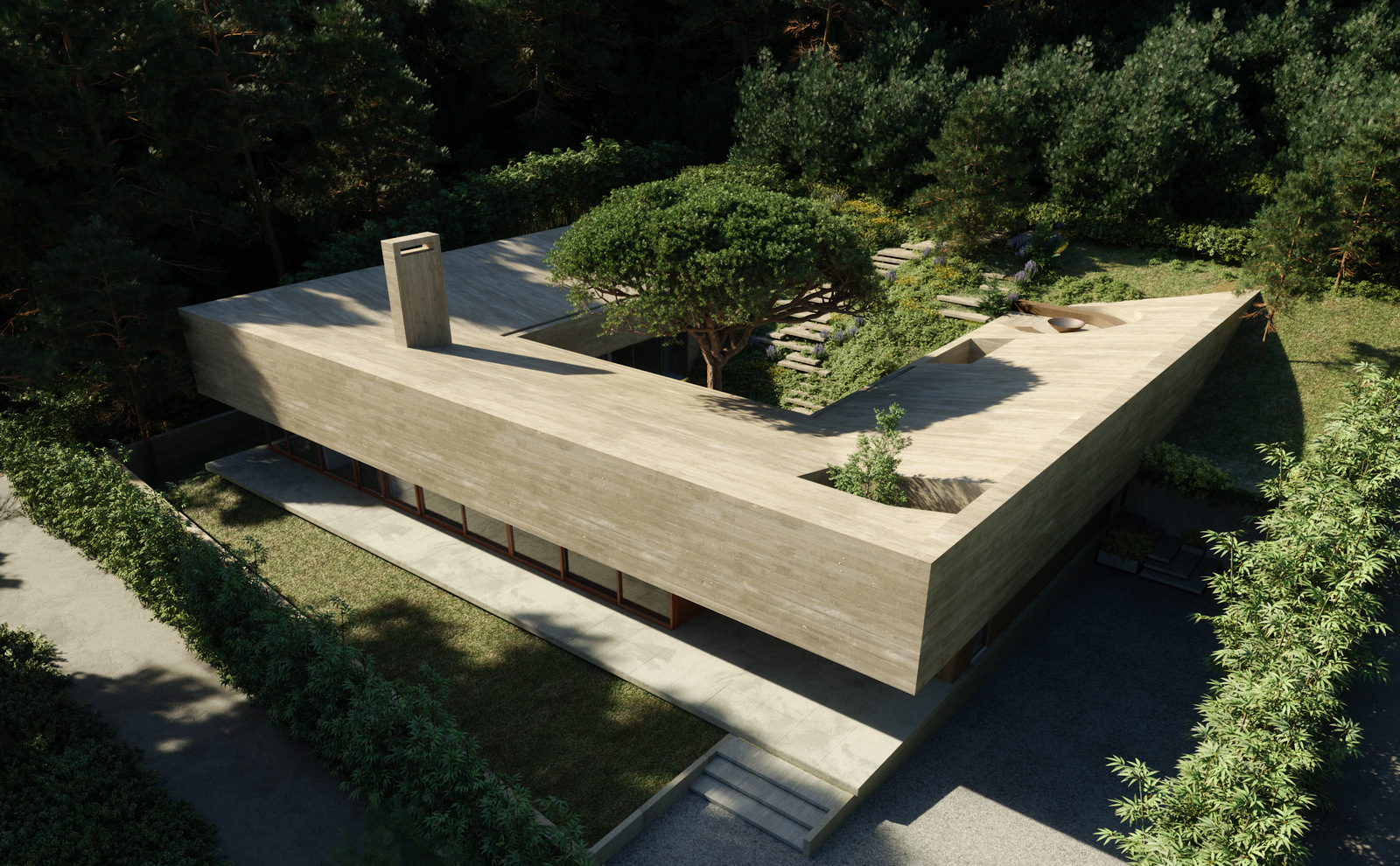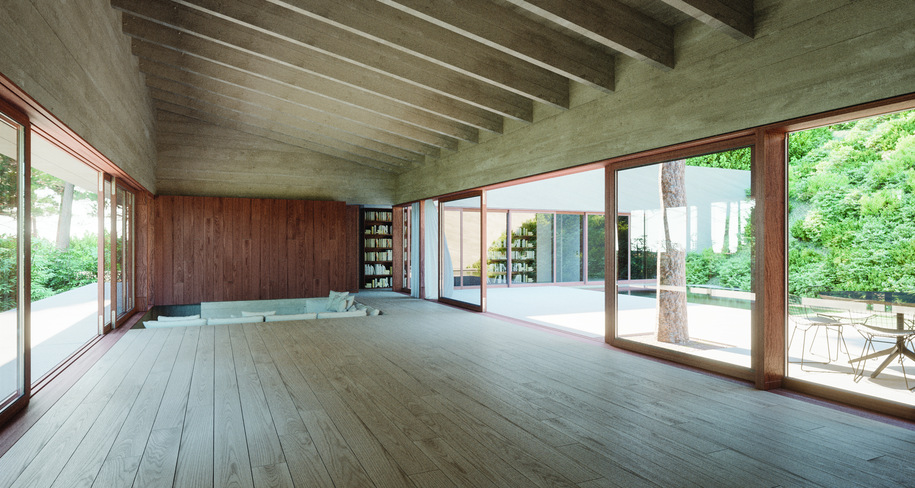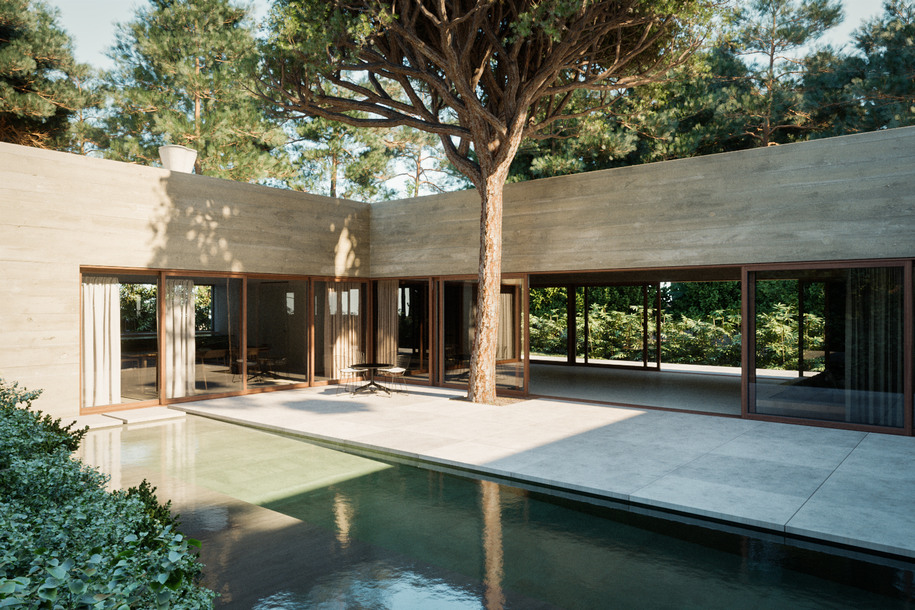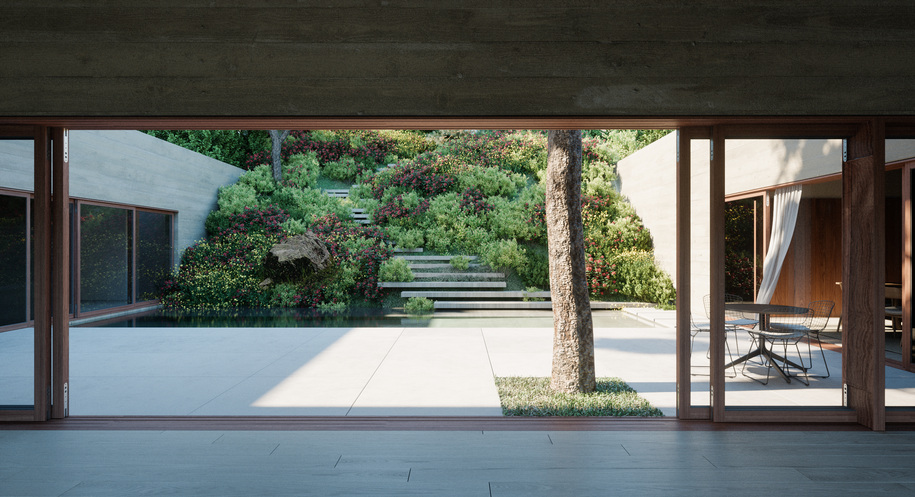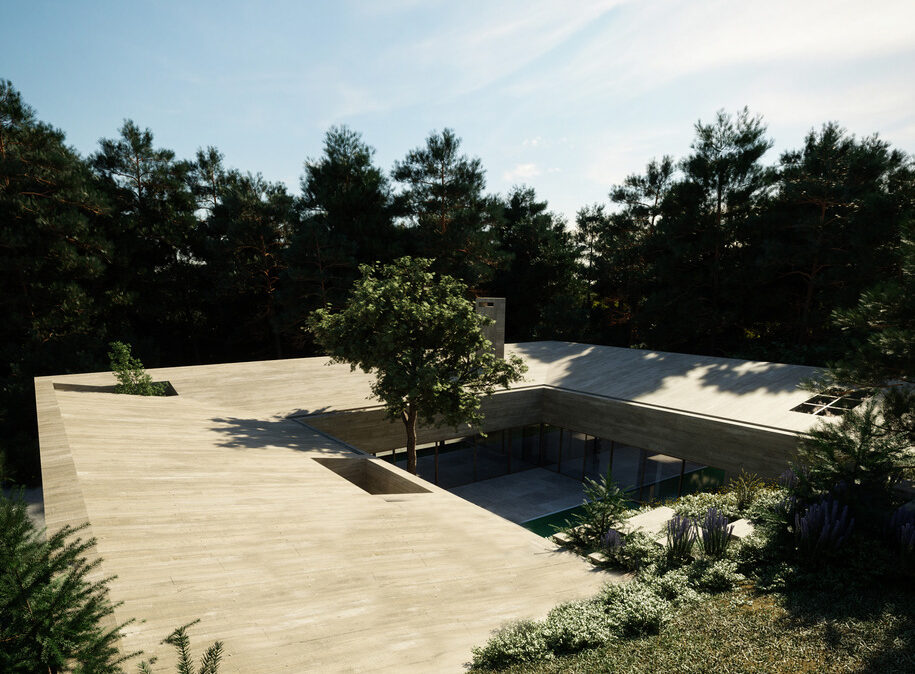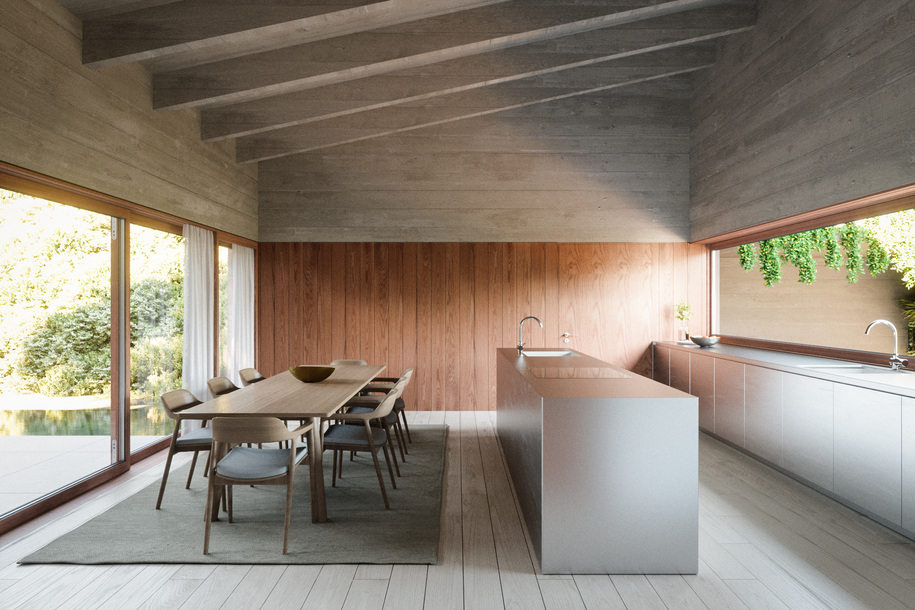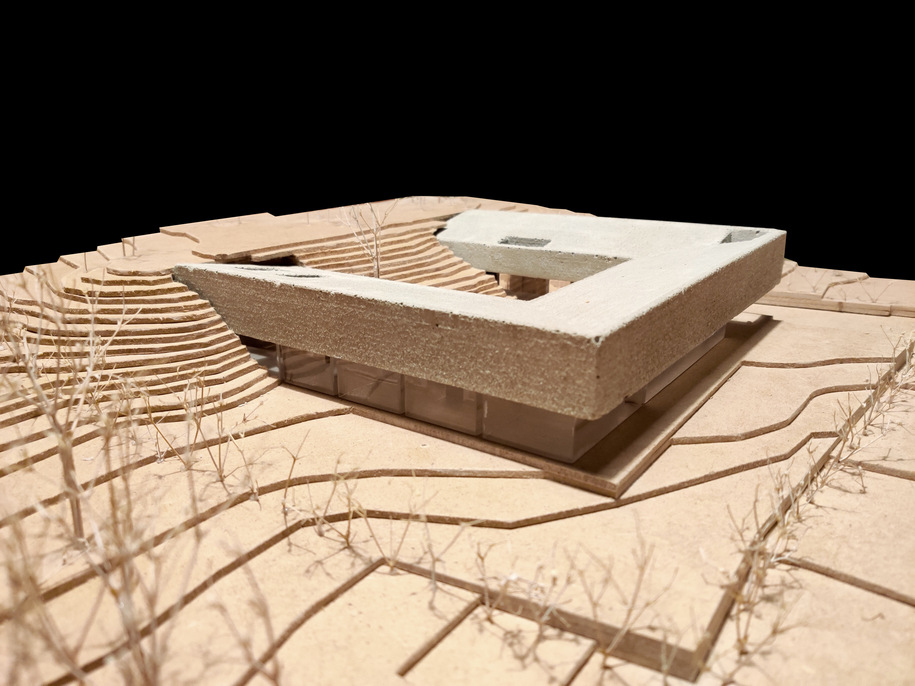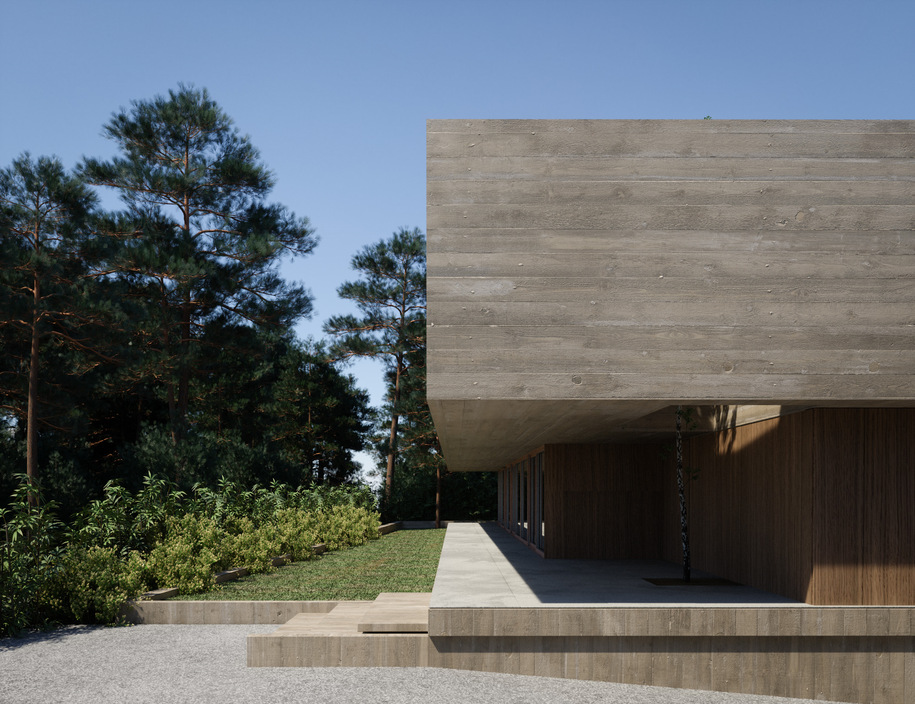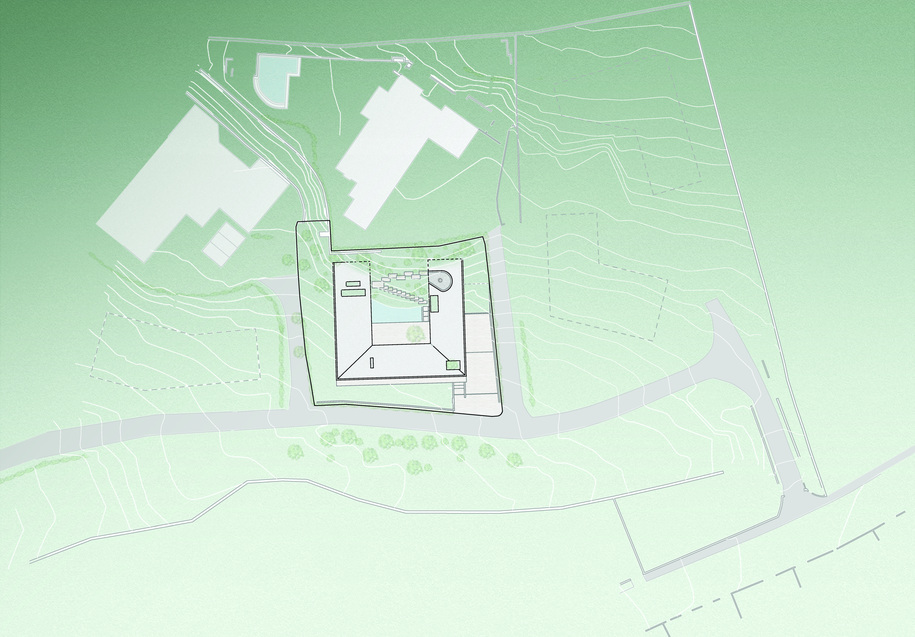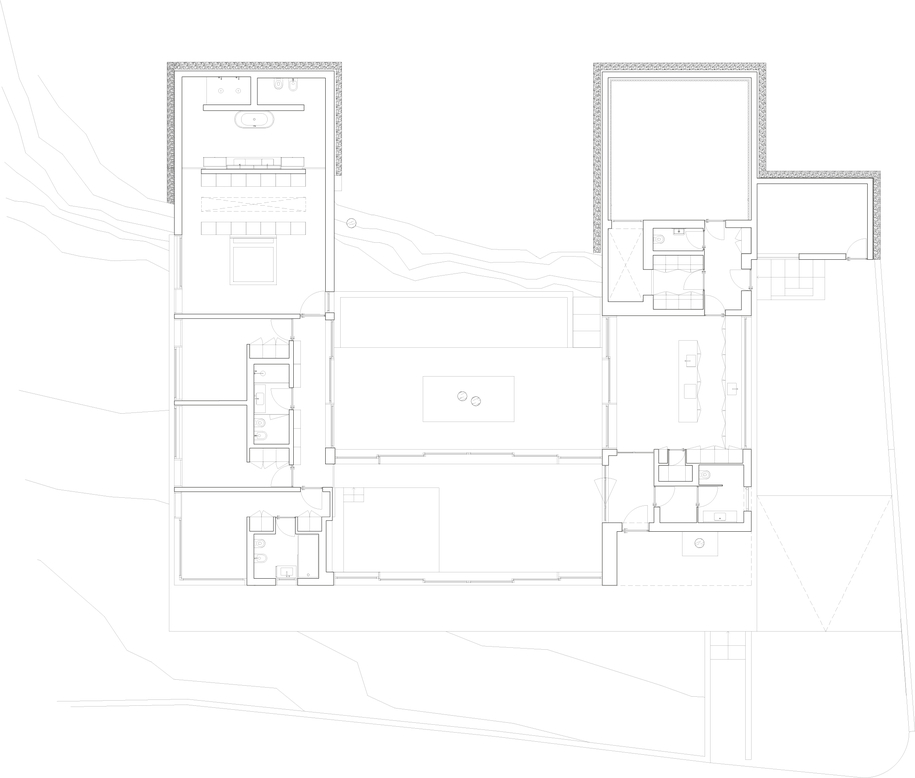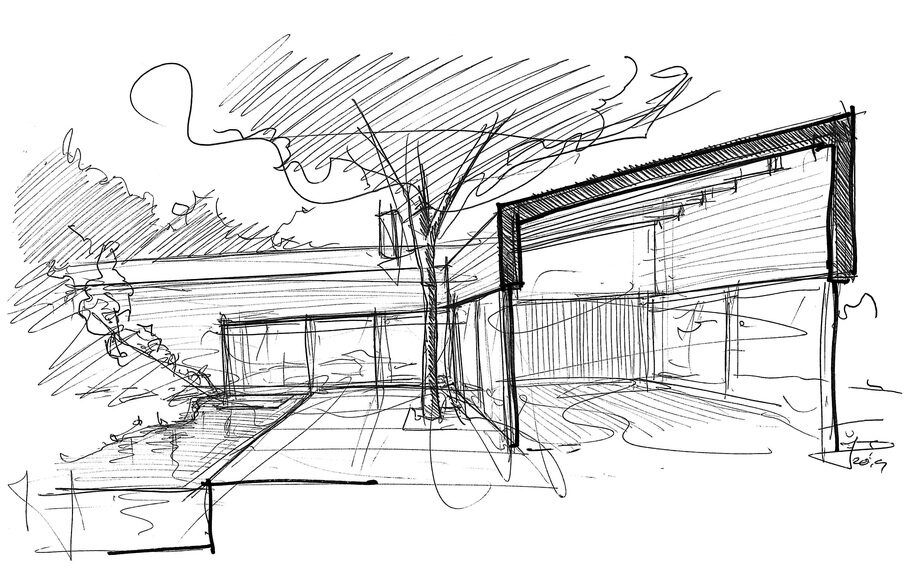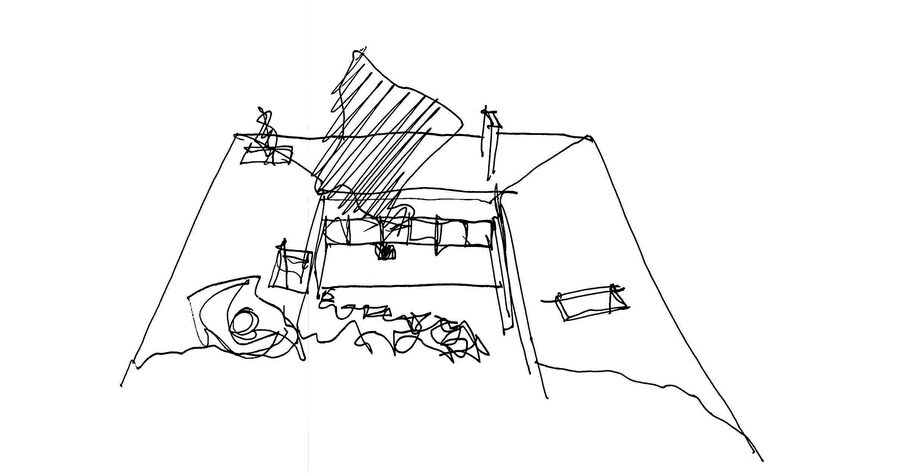Topography as the raw material of the architectural object.
OODA Architects designed Casa CM. Main goal of the project was to design a house that takes advantage of the characteristics and topography of the site. The team came up with a “half-buried” building, with a U-shaped volumetry.
-text by the authors
Located in the Portuguese town of Oeiras, Casa CM is an architectural response to the irregular morphology of the allotment where it is inserted. The project consisted in developing an “earthen-house” that could take advantage of the characteristics and topography of the site, conserving the existing trees. The result was a “half-buried built solution” that
embraces the centuries-old pines. The existing slope to the west, hostile to the use of natural light, was the motto for the development of the U-shaped volumetry. The implantation of an one-storey volume is directly related to the slope where it is possible to guarantee an unobstructed ceiling height and good solar exposure at any time of the day, as well as private outdoor spaces.
A water feature as a scenic pool, that mirrors and magnifies the surrounding scenery, compensates for the lighting and the half-buried condition of the entrance patio that regulates and distributes the program, allowing for spatial, structural and material coherence of the “patio-house”. The central void of the courtyard is formed by three sides with fluid spaces destined for social and individual uses.
The geometric simplicity is juxtaposed by the material complexity, with timber and concrete featuring as the main building elements that define the upper and lower parts of the volume. In the upper part, the cold material – concrete – was the tectonic solution of the project.
The aesthetic component of this material resolved the structural aspect, allowing the creation of a high beam at the crown that supports the structure without the need for pillars. This way, it was possible to have such a wide span, opening the room in its entirety and diluting the interior with the exterior, with great visual permeability.
In the lower and habitable part of the volume, a warm material – wood – was preferred, adopting a more human and intimate component which is also an extension of the natural surroundings at the core of the dwelling. The transparent materiality of the large span accentuates this in-out dialogue.
Differing from a more contemporary architecture that disenchants ornament, careful attention was paid to detail and ergonomic expression, such as door knobs, that allude to the 40s and 50s (20th century) and architects such as Frank Lloyd Wright or Walter Gropius.
The static horizontality of the transversal section is animated by rhythmic diagonal cross movements, in an almost musical spatiality, that due to topography creates a dialectic of spaces and paths, either leading to the patio and interior of the house or to the top, adding dimensions and new uses to the roof that prolong the poetic narrative of the house.
“A house that could only exist here“.
“It is a profound exercise on the human scale, very interesting and important for us.”
Julião Pinto Leite, Partner at OODA
Plans
Credits & Details
Project location: Oeiras, Portugal
Area: 350 m2
Type: Commission
Status: Starting Construction
Date of completion: 2018
Architecture: OODA Architecture
Engineering: TEKK Engenheiros Consultores, A3R Engenharia Lda
Landscape architecture: P4 Artes e Técnicas da Paisagem
Visualizations: Fusão
Follow OODA Architects on Facebook here
Follow OODA Architects on Instagram here
READ ALSO: House in Saint-Julien le Petit, France | ciguë
